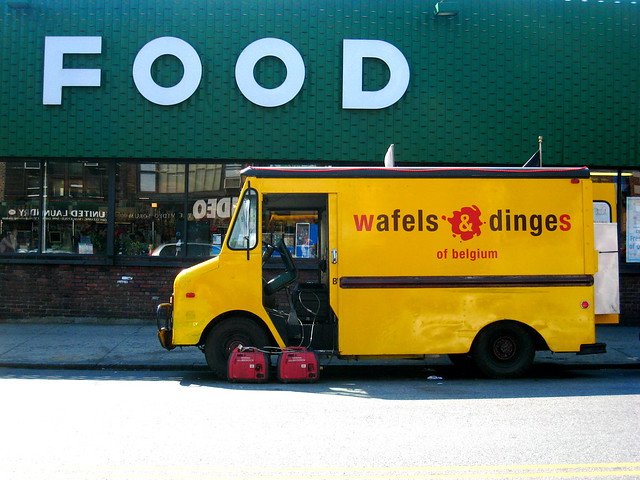Once upon a time in 2008, the MTA and its advertising partner Titan proposed GPS-based advertising for New York City buses. The idea was a simple one: By equipping buses with LED screens and GPS responders, Titan could feed location-based ads to buses around New York. In 2009, the authority even tested a few buses with these next-gen ads, but the idea has seemingly fallen by the wayside. Likely, the costs were too high to justify the technology.
Up in Boston, we receive word of a similar initiative with an auditory twist. The MBTA is thinking of selling location-specific audio ads on its buses. Ben Wolfrord from The Globe has more:
For the second time in four years, the Massachusetts Bay Transportation Authority is considering selling audio ads on public transit as a way to drum up new revenue for the cash-strapped agency. A new pitch calls for targeted ads on buses that would be triggered by GPS technology. When the bus passes a particular business, an ad for that shop could play over the vehicle’s loudspeaker. If the audio advertising idea can generate money for the MBTA without irritating riders, officials said they will give it a try.
In 2007, the agency’s T- Radio, a program that mixed music and talk on T station platforms was short-lived. Hundreds of complaints poured in, and the MBTA killed the initiative after two weeks, before ads were aired. The MBTA is not yet sold on the latest idea, general manager Richard A. Davey said. “We’re going to take a look at it. We haven’t made a decision, but it’s something I’m interested in.’’
Before the end of the month, MBTA officials will hear a pitch from Ohio-based Commuter Advertising, which has launched similar advertising with several transit authorities, from Toledo, Ohio, to suburban Chicago, since its founding in 2008. “The company was founded by two transit riders,’’ said Russ Gottesman, cofounder of Commuter Advertising. For that reason, he said, they have the riders’ interests and their tolerance levels at heart. If the ads are profitable, Gottesman said, it could help prevent fare hikes.
According to The Globe, Commuter Advertising has figured out how to exploit audio ads that don’t annoy passengers. These ads would be short — only 29-39 words — and would play “when a bus drives past a business whose owner has purchased air times.” Only a few minutes per hour would be devoted to ads, and other cities — including Champaign, Illinois, have deployed these successfully.
As Boston debates this potentially revenue-generating projects, I wonder how New Yorkers would respond to such an auditory intrusion. Already, our daily rides are saturated with noise. Announcements than range from the unhelpful to the annoying bombard subway riders, and advertisements seem to be the next logical step. After all, the FIND displays have a space for video ads that the MTA doesn’t currently exploit; why not use the public address system to generate revenue?
For some reason, we seem to be more sensitive to paid advertisements than to run-of-the-mill announcements, but if these measures can drive revenue into the pockets of cash-starved transit agencies, why not? The MBTA thinks it can avert fare hikes if it can just find alternate sources of revenue, but that seems to be nothing more than wishful thinking. Still, if the choices are some audio ads or service cuts, I’ll take the ads every which way ’til Sunday.













